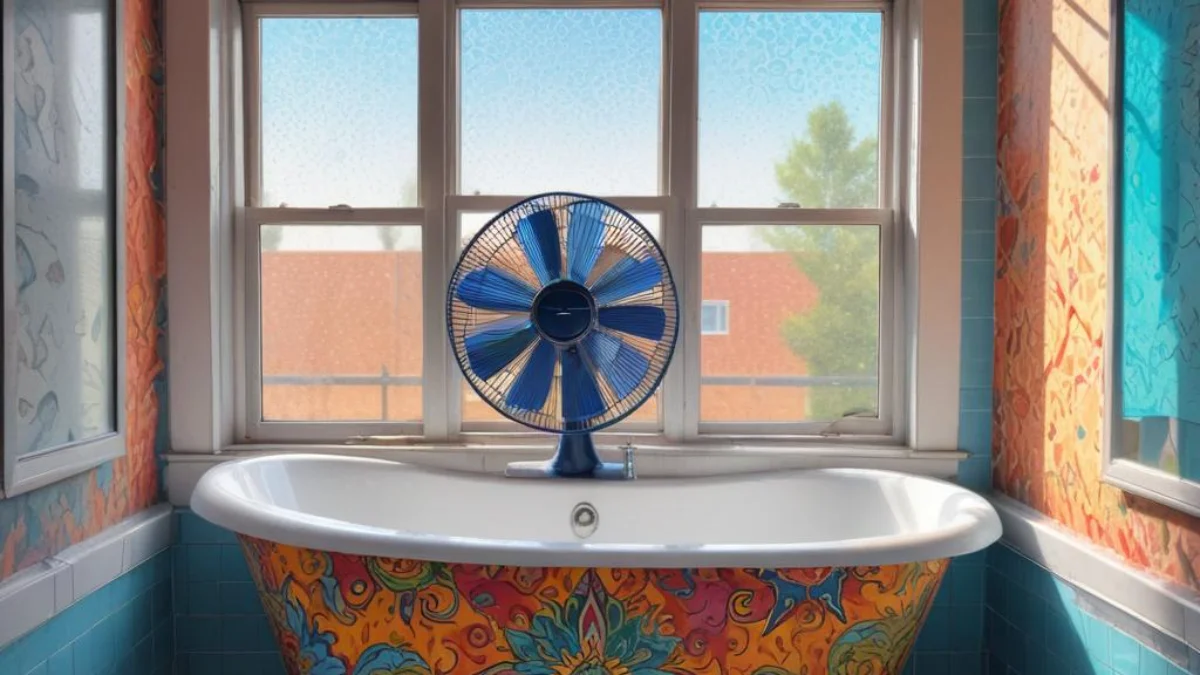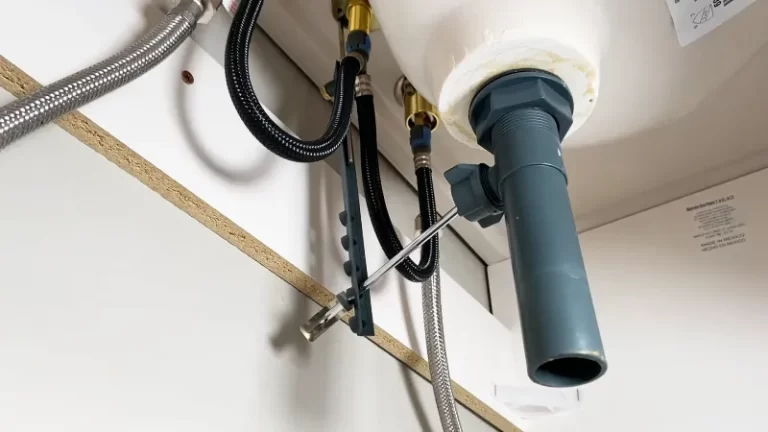How to Get Rid of Smell from Reglazing Tub?
You’ve just invested in reglazing your bathtub, and it looks brand new. The glossy finish is pristine, and your entire bathroom feels refreshed. But there’s one major, overwhelming problem you didn’t anticipate: the intense chemical smell. This powerful odor can quickly permeate your entire home, turning your exciting bathroom upgrade into a nauseating headache. You’re likely asking yourself, “how to get rid of smell from reglazing tub?” and, more importantly, “is this smell harmful?”
The good news is that the smell is temporary and there are effective methods to significantly speed up its removal. This comprehensive guide will walk you through why your newly reglazed tub has such a strong odor, how long you can expect it to last, and the exact steps you can take to reclaim your home from the fumes. We’ll cover everything from immediate ventilation strategies to natural odor absorbers that work wonders.
Don’t let the chemical smell ruin your bathroom renovation. With a few simple, actionable steps, you can breathe easy and start enjoying your beautiful, like-new bathtub much sooner. Let’s dive into the solutions and get your home smelling fresh again.
You'll Learn About
Understanding the Source of the Reglazing Odor
The first step in combating the smell is understanding what causes it. The odor isn’t a sign of a poorly done job; rather, it’s an inherent part of the chemical process of bathtub reglazing. The strong smell comes from Volatile Organic Compounds (VOCs) that are released into the air as the new coating cures.
Bathtub reglazing, also known as refinishing or resurfacing, involves applying a new, durable coating over the existing tub surface. This coating is typically a type of high-performance epoxy or polyurethane paint. These products contain solvents that are necessary to keep the coating in a liquid state for application. As the coating dries and hardens—a process called curing—these solvents evaporate, releasing VOCs into the air. It’s these VOCs that you’re smelling.
Think of it like painting a room or staining a piece of furniture; there’s always a distinct odor as the product dries. However, the coatings used for bathtubs are industrial-strength, designed for extreme durability and water resistance, which is why the associated smell is significantly more potent and lingers longer. The curing process is critical for the longevity of your reglazed tub, but it’s also the direct cause of the unpleasant smell.
How Long Does the Reglazing Smell Last?
This is one of the most pressing questions for homeowners. The duration of the smell can vary based on several factors, but you can generally expect the most intense odor to last for 24 to 72 hours. This is the primary curing window when the highest concentration of VOCs is being released. After this initial period, the smell should begin to fade noticeably.
However, a faint residual odor might persist for up to a week or even slightly longer. The key factors influencing this timeline include the type of coating used by the professionals, the size of your bathroom, and, most importantly, the quality of ventilation in the space. Poor airflow will trap the VOCs, causing the smell to linger for a much longer period. Your goal is to actively manage these factors to expedite the process.
It’s also important to follow the refinisher’s instructions regarding the curing time before you can use the tub. Using the tub too early can not only damage the new surface but may also prolong the odor issue. Patience during this initial curing phase is crucial for both the finish and for fume dissipation.
Immediate Steps to Ventilate Your Bathroom
The single most effective strategy for getting rid of the reglazing smell is aggressive ventilation. Your primary goal is to move the VOC-laden air out of your bathroom and your home, replacing it with fresh air from outside. The moment the reglazing professional finishes the job, you need to start this process.
Begin by opening every possible window in the bathroom. If you don’t have windows directly in the bathroom, open windows in adjacent rooms and hallways to create a cross-breeze. The more airflow you can generate through your home, the faster the fumes will dissipate. Keep these windows open 24/7 for at least the first three days if weather permits.
Simply opening a window isn’t enough; you need to actively force the air to move. Place a box fan or a standing fan in the bathroom doorway, pointing it *out* of the bathroom. This creates negative pressure, pulling the contaminated air from the bathroom and pushing it into the better-ventilated parts of your house and ultimately outside. Do not point the fan *into* the bathroom, as this can just blow the fumes further into your home.

Using Your Bathroom’s Exhaust Fan
Your bathroom’s built-in exhaust fan is a powerful ally in this fight. Turn it on immediately and let it run continuously for the first 48 to 72 hours. These fans are specifically designed to vent air from the bathroom directly outside. Running it nonstop will constantly pull the VOCs up and out of the room.
If you’re concerned about running the fan for that long, don’t be. Most modern exhaust fans are designed for continuous operation. The small amount of electricity it uses is a tiny price to pay for cleaner, fresher indoor air. This simple step, combined with open windows and an additional fan, forms the cornerstone of effective fume removal.
To maximize the exhaust fan’s effectiveness, ensure the bathroom door is slightly ajar. This allows fresh, replacement air to be drawn into the room from the rest of the house as the fan expels the smelly air. If the door is completely shut, the fan can’t work as efficiently. While working on home maintenance, it’s always good to be prepared for unexpected issues, like when you need to remove wood stain from metal, having the right knowledge is key.
Natural and Household Odor Absorbers
While ventilation removes the fumes, you can also use various household items to absorb and neutralize the odors that are present. These methods work by trapping the odor-causing molecules. They are most effective when used in conjunction with good ventilation, not as a replacement for it.
Place several bowls of activated charcoal around the bathroom. Activated charcoal is highly porous and incredibly effective at trapping organic compounds from the air. You can find it online or in pet stores (it’s used in aquarium filters). Spread it in shallow bowls or trays to maximize the surface area exposed to the air.
Baking soda is another excellent and inexpensive odor absorber. Just like you’d place a box in the fridge, you can put several open bowls of baking soda in the bathroom and even in the tub itself (once it’s fully cured, of course). It will help absorb some of the lingering chemical smells. White vinegar works in a similar way; bowls of vinegar placed around the room can help neutralize odors, though it will leave behind its own distinct smell, which some people find more tolerable and which dissipates quickly once the vinegar is removed.
Harnessing the Power of Natural Elements
Certain natural items can also be surprisingly effective. Freshly ground coffee is a powerful odor absorber. Place bowls of dry, fresh coffee grounds in the bathroom to help mask and absorb the chemical smell. Onions, surprisingly, can also work. Cut a few large onions in half and place them cut-side-up in bowls of water. The onion will absorb the VOCs from the air, but be warned: you’ll be trading a chemical smell for a strong onion smell.
Another popular method involves using buckets of water. Water itself can help absorb some of the airborne solvents. Place a few buckets of cold water in the bathroom. Some people even add a few slices of lemon or a splash of vanilla extract to the water to add a more pleasant fragrance to the air as the chemical smell is absorbed.
Remember to replace these absorbers every 24 hours or so, as they will become saturated with the compounds they’ve trapped from the air. These natural solutions can be a great secondary line of defense, tackling the residual odors that your ventilation efforts might miss. Proper maintenance extends to all parts of your home’s exterior as well; for instance, understanding if falling acorns can damage a roof helps in preventative care.
Cleaning and Post-Curing Care
Once the initial 72-hour curing period has passed and the smell has significantly subsided, a gentle cleaning can help remove any remaining odor-causing residue. It is absolutely critical that you wait until the tub is fully cured according to the refinisher’s specific instructions before you introduce any water or cleaning agents to the surface.
When it’s safe to clean, use a mild, non-abrasive cleaner. A simple solution of warm water and a few drops of dish soap is perfect. Using a soft sponge or cloth, gently wipe down the entire reglazed surface of the tub. Also, wipe down the surrounding walls, floors, and any other surfaces in the bathroom.
VOCs can settle and leave a light, oily residue on surfaces throughout the room. Cleaning these surfaces removes that residue, which can be a source of lingering odor. After washing, rinse the tub thoroughly with clean water and dry it with a soft towel. This first cleaning is an important step in transitioning from a curing worksite back to a functional, pleasant bathroom.
Accelerating the Curing and Deodorizing Process
While patience is key, there are a couple of things you can do to help the process along. Heat can sometimes accelerate the curing of the paint, which in turn can help the VOCs dissipate more quickly. If it’s safe to do so, you can try raising the temperature in your home slightly for the first day or two. However, consult with your reglazing professional before doing this, as some coatings may have specific temperature requirements.
An air purifier with an activated carbon filter can also be a game-changer. If you have one, place it in the bathroom (or as close as possible) and let it run. These devices are designed to remove particles and odors from the air, and the carbon filter is specifically effective against the VOCs released during the reglazing process. This can dramatically improve the indoor air quality throughout your home, not just in the bathroom.
Combining multiple strategies is the most effective approach. Don’t rely on just one method. Use fans, open windows, run the exhaust, and put out bowls of charcoal and baking soda. The more proactive you are, the faster you will eliminate the smell. This proactive approach applies to many home improvement projects, even understanding the compatibility of different materials, such as whether you can mix vinyl and aluminum gutters.
| Method | Effectiveness | Cost | Best For |
|---|---|---|---|
| Cross-Ventilation (Windows) | High | Free | Primary fume removal in the first 72 hours. |
| Box Fan (Pointing Out) | High | Low | Actively pulling contaminated air out of the bathroom. |
| Bathroom Exhaust Fan | High | Low (electricity) | Continuous, direct venting of fumes to the outside. |
| Activated Charcoal | Medium | Low | Absorbing lingering airborne VOCs and residual odors. |
| Baking Soda / Vinegar | Medium | Low | Inexpensive and readily available odor absorption. |
| Air Purifier (Carbon Filter) | High | Medium-High | Improving overall indoor air quality and trapping VOCs. |
| Gentle Cleaning (Post-Cure) | Low-Medium | Low | Removing odor-causing residue from surfaces. |
When to Be Concerned About the Smell
For most people, the smell from a reglazed tub, while unpleasant, is a temporary nuisance. The VOC levels are highest immediately after the application and drop off sharply within a few days. However, individuals with certain sensitivities should take extra precautions. This includes people with asthma, respiratory issues, young children, pregnant women, and the elderly.
If possible, these individuals should avoid the house, or at least the area near the bathroom, for the first 24 to 48 hours. If that’s not feasible, maximizing ventilation is not just a suggestion—it’s a necessity. If anyone in the household experiences symptoms like severe headaches, dizziness, nausea, or difficulty breathing, they should leave the area and get fresh air immediately. If symptoms persist, it’s wise to consult a healthcare professional.
It’s also important to trust your nose. If the smell seems unusually strong after 72 hours and isn’t showing any signs of improvement despite your best ventilation efforts, it’s a good idea to contact the reglazing company. They can confirm that the curing process is proceeding as expected and may have additional advice based on the specific products they used. A reputable company will stand by their work and offer guidance to ensure you’re happy and safe in your home.


